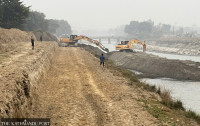National
Social movements in 2019
This year, Nepal witnessed many social movements, with people taking to the streets and on social media to make their voices heard.
Shashwat Pant & Samiksha Baral
Societies thrive in diversity when it comes together for a common cause, a shared belief or interests that span varied cultures.
Like other years, Nepal in the past year has seen a lot of movements. While the Guthi Movement brought most of the Newar community together, movements demanding freedom of expression started a dialogue about the importance to uphold such freedoms. Even the pride parade was quite important, as it was the first time it was done on pride month which brought together a large number of people from the LGBTIQ community.
Here are six important movements of 2019:
Guthi Movement
2019 saw arguably the biggest protest since the 2006 People’s Movement, as thousands of protesters gathered at Maitighar Mandala to oppose the controversial Guthi Bill. The movement started in early June took a nasty turn on June 9, when protesters demanding the withdrawal of the Guthi Bill, were attacked by the police with batons and water cannons at Maitighar Mandala.
That day, at least six people were injured when police used force to disperse heritage conservationists, locals and stakeholders who were protesting. However, on June 18, with thousands of protestors at Maitighar Mandala, the police refrained from using force. In the protest, residents of the Kathmandu Valley—mostly from the Newar community—took to the streets in large numbers, protesting what they called a state-led attempt to wipe out centuries-old customs and traditions and nationalise guthi owned land. During the protest, people demanded the bill be scrapped completely, not just amended.
But it wasn’t just Newars who took to the streets and social media platforms. Spurring the movement on the ground was #StopGuthiBill on Twitter. People formed Facebook groups against the bill and organised various small protests before the massive yet peaceful protest was held in Maitighar Mandala. This outpouring from the public led to the suspension of the controversial bill.
Late November, the Cabinet gave the go-ahead to the ministry to draft a new land bill that will include provisions regarding guthi management. However, the government is yet to clarify if Guthi Bill will be incorporated on the Land Bill.
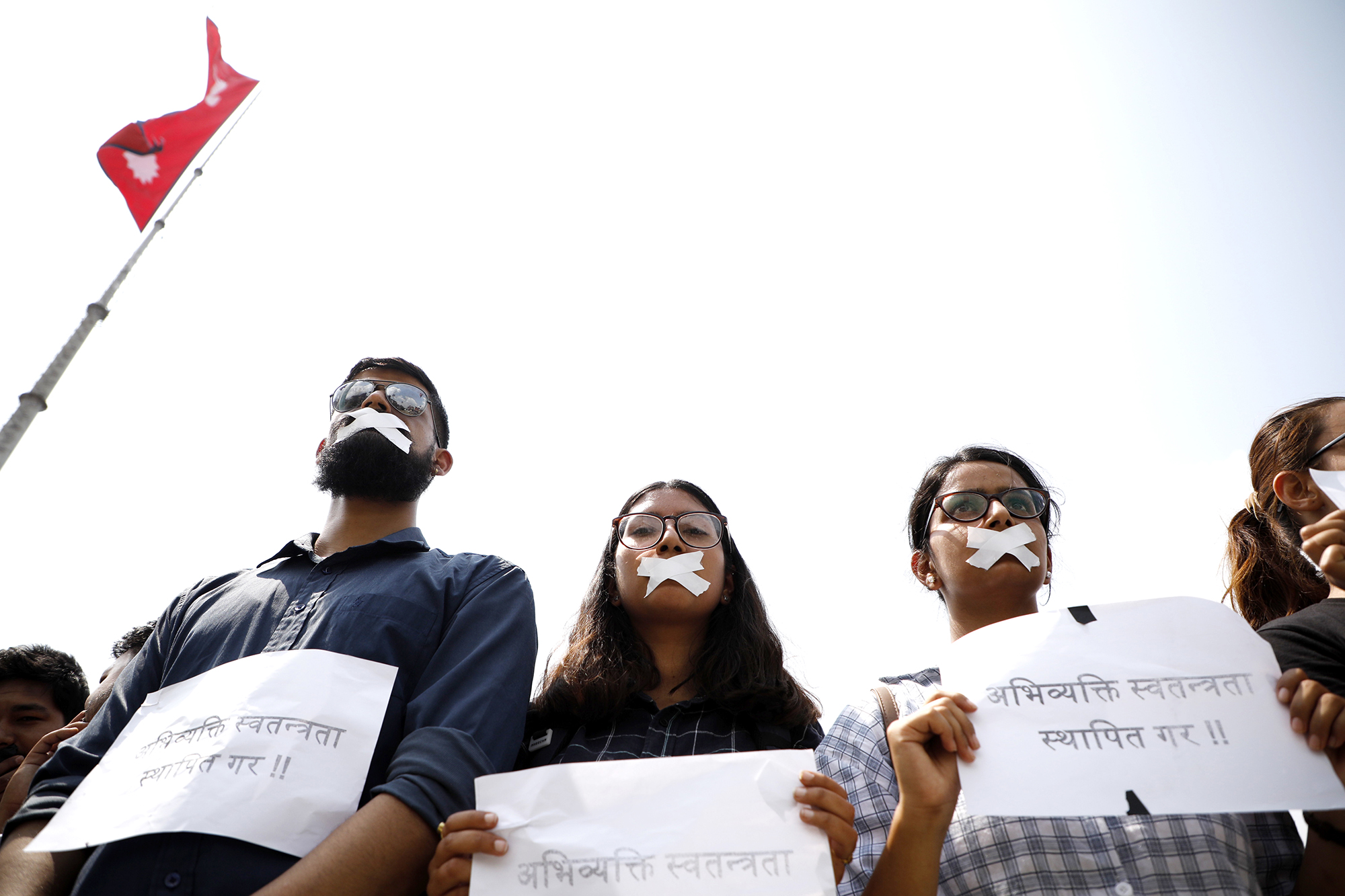
Freedom of Expression
This year wasn’t the best of years for Freedom of Expression, especially for singers and a certain comedian. Samir Ghising aka V-TEN, Durgesh Thapa and Pashupati Sharma all had to take down their songs as they advocated anti-social values’ amongst the citizens.
Sharma was threatened by NCP cadres after which he had to take down his song ‘Lutna sake loot’, which talked about how corruption was prevalent in Nepal. Immediately after, #lutnasakelutkancha and #pashupatisharma started trending on Twitter and other social media platforms. On February 17th, people took to the streets to express their dissatisfaction over the issue claiming that the government’s move was an attack on democracy.
Thapa too had to remove his song ‘Chiso beer happy tihar’ as the police stated the words used in his song went against the morals of the Nepali society. However, the situation got out of hand when Ghising was arrested, and jailed for nearly a week for expressing what was wrong in the Nepali society in his song ‘Hami yestai ta honi bro’. He too was accused of promoting anti-social values through this song and videos.
After Ghising’s arrest, loads of artists along with many citizens called out the government demanding the government respect the Freedom of Expression.
That wasn’t it, stand-up comic and content creator Pranesh Gautam was also jailed this year. His crime—posting a movie review. According to lawyers and activists, the police’s arrest of popular singers for violating ‘social standards’ is an exercise in moral policing and has little to do with actual security.
Soon after, #freepranesh started trending in the Nepali Twitterverse. Hundreds of YouTubers, social media users, stand-up comedians, and rights activists assembled in Maitighar Mandala to protest against the arrest of a YouTuber and stand-up comedian Gautam.
There is one thing common between all these arrests—the Information and Technology Bill. But the very nature of the bill, which is bent on criminalising social media interactions—those could be deemed illegal based on the vague language of the provisions—puts the users at high risk of being penalised for online posts that “offend” politicians or bureaucrats.

Pride parade
The pride parade organised on the day of Gai Jatra festival by Blue Diamond Society, an organisation advocating the rights of LGBTIQ, have been taking place since 2002. But in 2019, another pride parade was organised by Queer Youth Group (QYG) and Queer Rights Collective in collaboration with various organisations during the international pride month on June 29. Hundreds of participants thronged Maitighar Mandala with rainbows painted on their face, colourful umbrellas, and vibrant clothes, and rallied from Maitighar to New Baneshwor.
One of the main aims of the parade was to shed light on the specific gender identities by holding placards that defined the wide range of sexual orientations, in not just Nepali and English, but multiple ethnic languages.
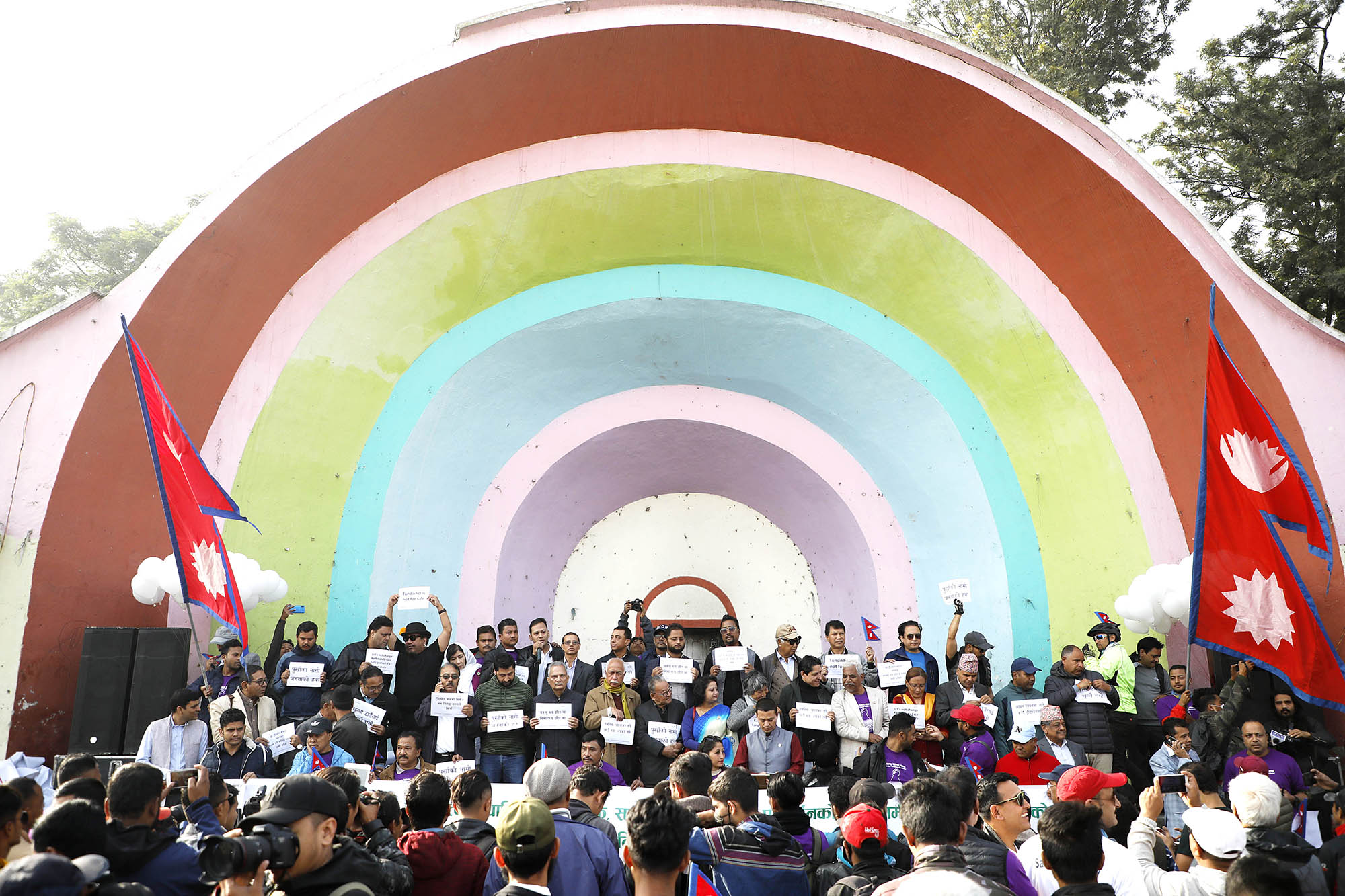
Occupy Tundikhel
This was a movement started by residents of Kathmandu to reclaim open spaces from encroachers—starting from Tundikhel. An initiative of local residents, environmentalists and heritage activists, the campaign sees the presence of prominent figures from politics to academics and civil society. This was another apolitical movement where the campaigners wanted to convey the message of how easily open spaces are being encroached upon by various institutions, organisations and individuals, and why they should be preserved.
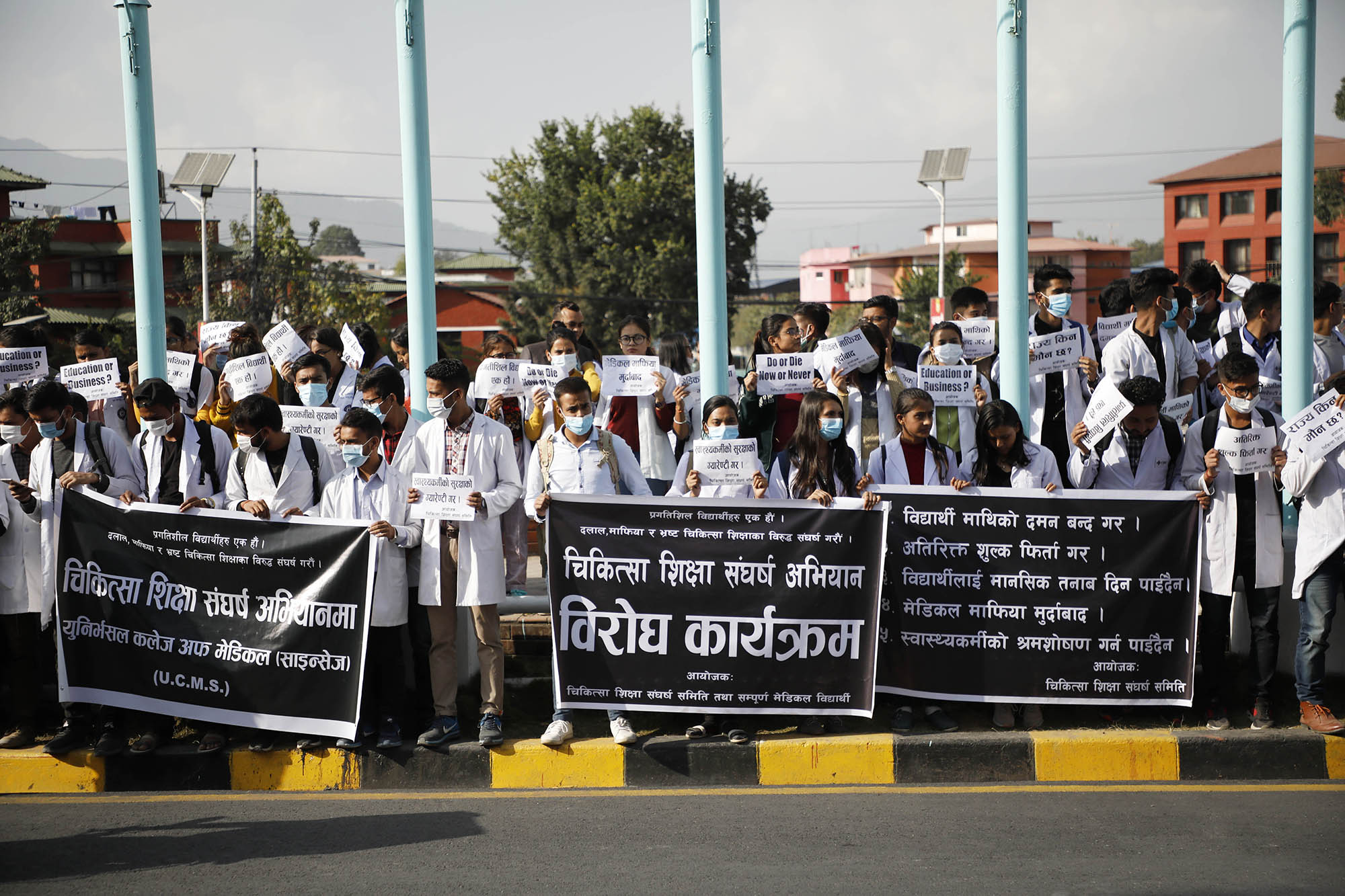
Medical education
One of the most important movements this year was that against the medical colleges that have been charging excess fee from its students. Students from various colleges staged protests demanding the colleges refund the excess fee taken from them since 2015.
According to the National Vigilance Centre, a dozen colleges have charged students excess fee worth nearly Rs3 billion from 2015 to 2018. The total additional fees charged by 12 medical colleges from their students totalled Rs2.85 billion ranging from Rs200,000 to Rs2.54 million per student annually. Due to the protest, the MBBS exams for all years, except third year, were postponed by nearly a month. Many were also arrested for their role in the protest.
Even though these private medical colleges admitted to charging excess fee from its students, it has yet to refund the amount. In a meeting with the government on June 5, the colleges said that it had to charge them excess fee as the ceiling set by the government was not enough to run the colleges.
The government since then has demanded the colleges refund the students the excess fee, however, the college, even after having been given multiple ultimatums, are yet to refund the students.
A meeting held at the Ministry of Home Affairs in the presence of education minister and attorney general on November 25 had instructed the police to resort to arresting the concerned medical college owners, as they have repeatedly disregarded the government’s directives to refund the students.
Till now, no one has been arrested, nor have the students been refunded their money.
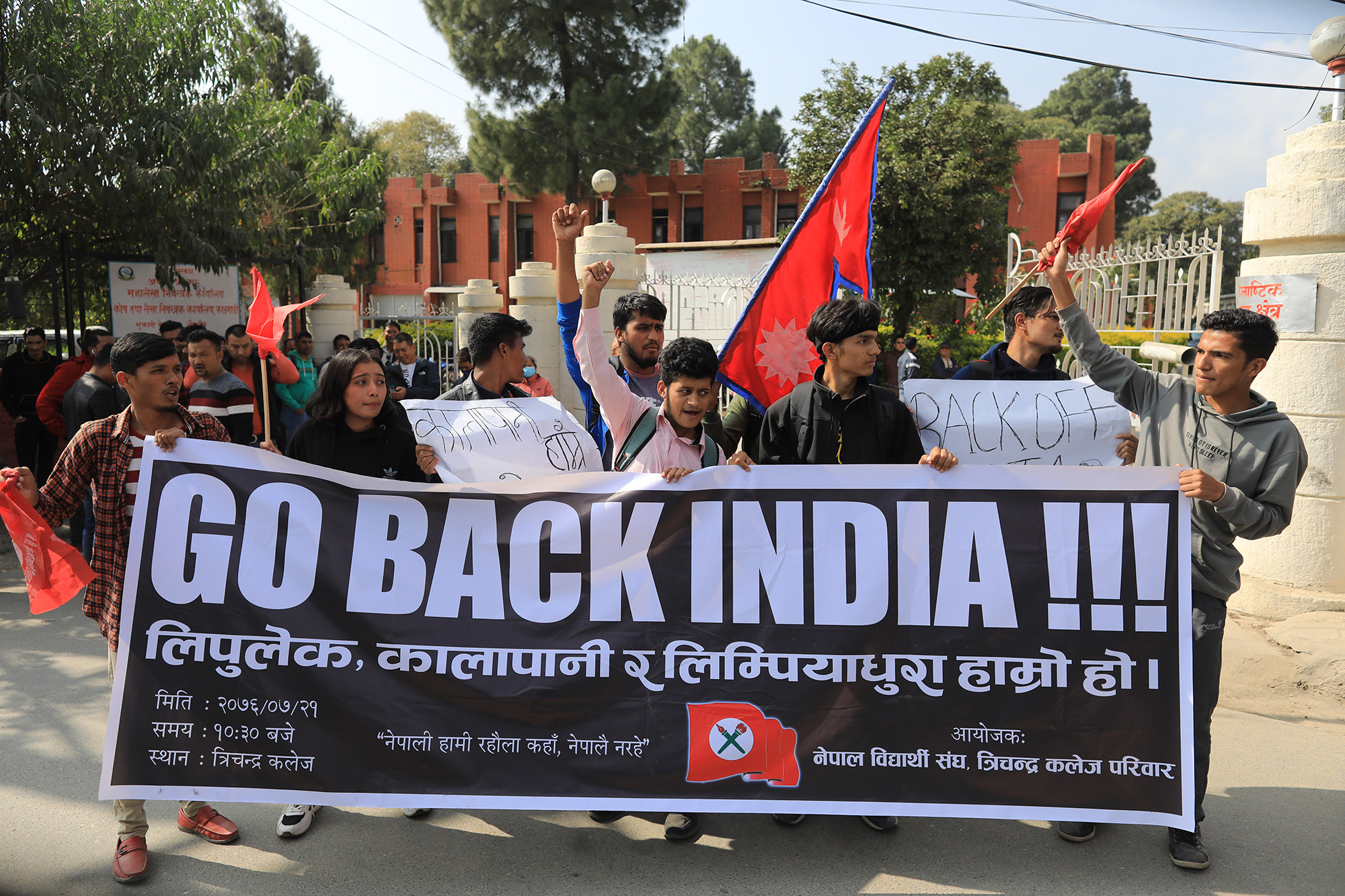
The Kalapani discord
A social media outrage among Nepali social media users started gaining traction against the Indian government after India released a new map, showing the bifurcation of Jammu and Kashmir, over a small 35 sq km disputed area—Kalapani claimed by both the countries.
As soon as the issue was caught up by local news media outlets, people took to Twitter and #backoffindia started trending. People vocalised their aggression towards the governments of both the countries through online posts, tweets, comments and also by showing up in masses in front of the Indian embassy in Kathmandu.




 10.12°C Kathmandu
10.12°C Kathmandu

